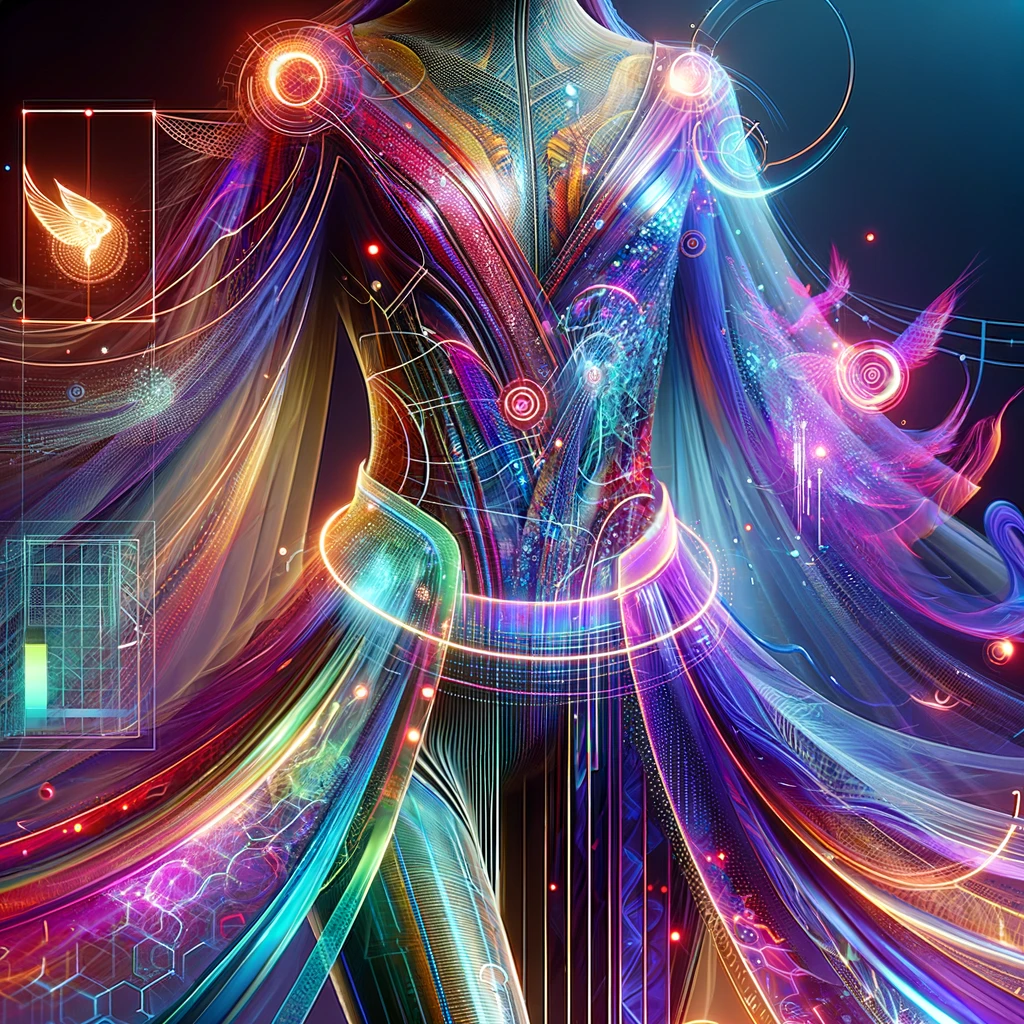
The fashion industry 💅, a captivating world of trends and self-expression, also carries a hefty environmental 🌎 and ethical burden. Pollution 🏭, resource depletion, and unfair labor practices cast a shadow on its glamour. However, amidst these concerns, a wave of innovation is reshaping the industry.

Roei Derhi, founder of Placebo Digital Fashion House, offers a refreshing perspective. For him, "fashion is about identity" but not just individual expression. He expands the definition to encompass sustainability as a core aspect of who we are in the 21st century. Derhi emphasizes empathy, bridging cultures and fostering a global consciousness 🌏 that aligns with the UN's Sustainable Development Goals (SDGs). These goals address challenges like gender equality ⚖️, poverty, and climate change, all deeply connected to the fashion industry's impact.
Derhi acknowledges the trend towards digital fashion, but cautions against seeing it solely as a technological novelty. He argues that the rise of digital clothing reflects a deeper human desire for escapism and self-definition. This resonates with the findings of a recent McKinsey report. They highlight a growing consumer demand for meaningful experiences beyond just acquiring physical goods. Digital fashion, with its lower environmental ♻️ footprint and limitless creative potential, offers a compelling alternative.
To put this into perspective, DressX released a report on the sustainability of digital fashion where they estimated:
Production of a digital garment emits 97% less of CO2 than production of a physical garment. - DressX
This emerging space offers a fresh perspective. Fashion 👗 is no longer just about individual identity, but also about sustainable choices ♻️. The rise of digital clothing isn't simply about a new technology. It reflects a deeper human desire for escapism and self-definition. But this escapism shouldn't be purely aesthetic. Designers have a responsibility to ensure the ethical and sustainable production of digital garments. Empathy for the environment 🌎 and social impact ⚖️ should be woven 🧵 into the creative process, from concept to execution.
Weaving a Sustainable Future: Beyond Escapism

This vision 👓 isn't a solitary thread, but rather part of a rapidly growing movement 📈 within fashion. Circularity ♻️ is no longer a buzzword, but a core principle gaining traction across the industry. Brands like Patagonia are leading the charge with innovative repair and reuse programs, encouraging consumers to extend the life of their clothing. These efforts are not isolated. Organizations like the Ellen MacArthur Foundation's Circular Clothing Coalition and the Global Fashion Agenda's Circular Fashion initiative are working tirelessly to make circular fashion a reality.
Additionally, digital design tools are empowering designers to create more efficient and waste-conscious production processes 🗑️. By embracing these innovations, the fashion industry can move beyond a purely aesthetic escapism and weave a more sustainable future.
Consumers: The Engine of the Circular Revolution
The shift towards a circular fashion system isn't just about innovation and industry practices – consumers are the driving force behind this critical change. Education 📚 and awareness 👀 are key 🔑 to empowering consumers to make informed decisions. Organizations like the Global Fashion Agenda play a vital role by promoting supply chain transparency. This allows consumers to see where their clothes come from, how they're made, and what happens to them at the end of their lifespan. Armed with this knowledge, consumers can make conscious choices about the brands they support and the garments they purchase.
Beyond their purchasing power, consumers also play a crucial role in extending the lifespan of their clothing ♻️. Simple actions like proper care and repair can significantly extend the use-life of garments. Additionally, supporting second-hand clothing stores and rental services encourages the circulation of existing clothing within the system, reducing the demand for new production.
In essence, consumers are not just passive participants, but active change makers in the circular fashion movement. By making informed choices, extending the life of their clothing, and supporting circular initiatives, consumers hold the power to transform the fashion industry into a more responsible and sustainable ecosystem.
Democratizing Fashion: Beyond Physical Boundaries
Digital fashion has the potential to democratize fashion. Virtual clothing removes limitations like size and physical constraints, allowing for inclusive and diverse self-expression. Imagine a world with virtual wardrobes brimming with creativity, unbound by physical realities.
For many, physical clothing can be a source of frustration 😭. Size restrictions often exclude people from expressing themselves through fashion. Digital clothing eliminates these barriers. A petite person can rock a flowing ball gown 👗, while someone with a larger frame can experiment with daring silhouettes. This levels the playing field, allowing everyone to explore their personal style without limitations 🤯.
Digital fashion also transcends the boundaries of the physical body. Imagine adorning yourself with wings, sporting a tail made of flowing light, or even changing your entire outfit with a thought. Digital clothing allows for unbridled creativity, where self-expression can be as fantastical or as fluid as your imagination allows.
Challenges beyond the Runway: A Work in Progress

While digital fashion offers a glimpse into a more sustainable and expressive future, it's important to acknowledge the significant hurdles ⚠️ it needs to overcome before becoming mainstream. Here's a deeper look at some of the key challenges:
- Ownership and Intellectual Property: Questions around copyright and intellectual property need to be addressed to protect both designers and consumers. Additionally, issues of digital scarcity need to be established to ensure the value proposition for both exclusive and widely available digital garments.
- Integration with Existing Systems: Digital fashion currently exists in a silo separate from the traditional fashion industry. For widespread adoption, seamless integration with existing e-commerce platforms and production processes is necessary. This will involve developing interoperable file formats and standardized workflows that allow for smooth collaboration between designers, manufacturers, and retailers.
- Technical Limitations: Digital fashion technology is still in its nascent stages. Challenges like realistic fabric simulation and phygital experiences (blending physical and digital fashion) need further development. Additionally, ensuring interoperability between different virtual platforms where digital garments can be worn is essential for creating a cohesive user experience.
- Consumer Adoption and Behavior: Shifting consumer habits takes time. Educating consumers about the benefits and value proposition of digital fashion is crucial for mainstream adoption. Additionally, concerns around data privacy and security need to be addressed to build consumer trust in this new technology.
- Standardization and Regulation: As the digital fashion industry grows, standardization is needed to ensure fair competition and protect consumer rights. Regulations around digital product labeling, environmental impact assessments, and ethical labor practices in the digital design process might be necessary.
Overcoming these challenges ⚠️ will require collaboration between designers, technologists, policymakers, and consumers. By working together, we can unlock the true potential of digital fashion and create a more sustainable and inclusive future for the fashion industry.
The Future looks Bright 😎

The rise of digital fashion isn't just about aesthetics; it has the potential to be a force for positive change. By promoting inclusivity and self-expression, reducing environmental impact, and democratizing fashion, digital fashion can help us reimagine the industry for a more sustainable and equitable future. While the path ahead has its hurdles, the future of digital fashion is undeniably bright ✨.
